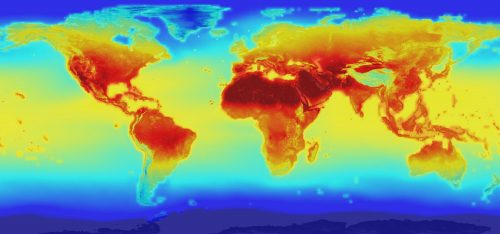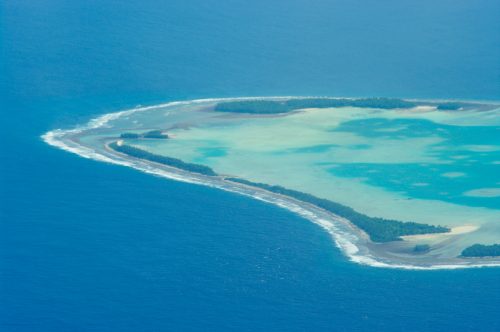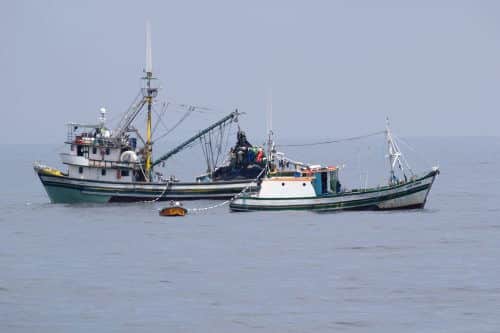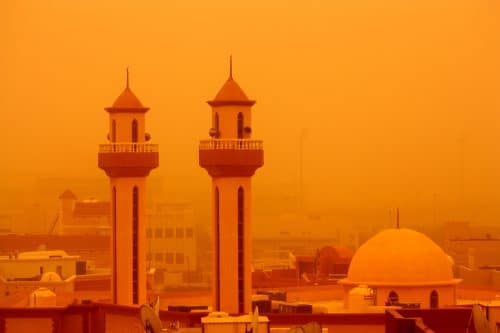The climate map of the world in 2100 reveals where climate change will endanger livelihoods and how residents are preparing for the future.

No one knows if by the end of the century a human consciousness will reside on a computer chip or even if driverless cars will rule the roads. But one thing is certain: the Earth will be warmer. The maps shown here predict how much warmer our world will be by 2100 and how precipitation patterns will change. To produce the numerical data, Scientific American partnered with scientists atAmes Research Center of the American Space Agency (NASA). The researchers used high-resolution models used by the Intergovernmental Panel on Climate Change (IPCC) to produce climate data for almost every point on Earth, for every month of every year until the end of the century. Our figure shows an interim forecast for the extent of greenhouse gas emissions: it assumes that the world will curb emissions by the middle of the 21st century but that temperatures will still rise significantly.
According to this prediction, this hot world will be inhabited by 10 billion people. Some of them will be forced to become climate refugees: to leave areas where the temperatures will regularly become unbearable or where the rising waters will destroy the houses. However, in most cases, policy experts predict, population movements will occur within the borders of the countries and will be relatively small. Most people, communities, cities and nations, will adapt their lives to the new reality in their place of residence. We have highlighted for you 11 hot areas where climate change will disrupt the living conditions and livelihoods of the people who live in them, alongside the strategies that these communities are adopting for themselves in preparation for this future.
click here To view an interactive presentation showing the data month by month until 2100
A. Newtok, Alaska, USA
If current predictions come true, the Arctic is expected to warm dramatically, more than any other region on Earth. The Eskimo village Newtok Already dealing with the effects of warming. The storms raging on the seashore and the melting of the permafrost eroded the land on which the village is built and swept it away. The residents, numbering about 4000 men and women, decided in a vote in 2003 to move to higher ground, about 15 kilometers away. But the transition is progressing at a slow pace because residents are trying to secure approval and funding to build roads, houses and an airport in the new location. The entanglement of the Newtok residents demonstrates that even when a community wants to move to a new place, the bureaucratic obstacles can make it difficult.
B. Tuvalu
At this time, when the sea level is expected to rise, it seems that the fate of nations living on flat islands is sealed. Indeed, the president ofmaldives Trying to move most of his country's population to another place. However, geomorphologists from New Zealand discovered thatatolls, the ring islands built of coral, of Tuvalu, are actually expanding. The storms and sea tides do erode the coastlines in some places, but they create areas of land in other places where they leave sand and gravel. Villagers in this island nation of 11,000 residents, all of whom live up to 5 meters above sea level, may find that the biggest challenge they face is adapting their built environment to changes in the terrain.

third. Western USA
Wildfires are expected to rage during the next century with increasing frequency and intensity. The trend is already evident in most areas of northwestern America, which are becoming hotter and drier. These fires threaten human life and property. To adapt to the new conditions, experts recommend that foresters thin high-risk forests and that homeowners and engineers build with fire-resistant materials and switch to fire-resistant landscape design.
d. Florida, USA
Demographers predict that by 2100, six million people will live in Florida in areas exposed to the risk of damage due to sea level rise (blue and green areas on the map). A bipartisan alliance in four southeast Florida counties is now working to prepare the region. The efforts include a plan to develop an infrastructure to keep drinking water available even when the water supply facilities are flooded with seawater. The working group is also working to change the construction standardsKey West So that the height of the houses will allow them to stay above the water surface during flooding.
God. Brazil
By the middle of the century, the fish harvests in many tropical regions may fall by half due to changes in the habitats of the fish, as a result of an increase in water temperature and salinity and changes in the living conditions of the fish. It is likely that this trend will continue until 2100 and beyond. The fall will put economic pressure on the people who make a living from fishing. (In contrast, in some sea areas, in the far north and far south, the fish population is expected to double.) Brazil responded by establishing reserves Marine fisheries where fishermen, managers and researchers try to balance the need to preserve nature and the need to continue the operation of small fishing areas. The model is still under development in Brazil, but its principles may direct the management actions of small fishing areas in other countries.

and. Lagos, Nigeria
According to the UN forecast, by 2100 84% of the world's inhabitants will live in cities. And yet, according to the estimate, 65% of the houses needed for this, have not yet been built. This is an opportunity for mayors and planners to build buildings resistant to climate change and to plan a better infrastructure for water supply and transportation. Lagos, for example, built around a flat coastal lagoon, is already suffering from sea level rise. resorts inVictoria Island, for example, had to move their place of residence in response to the weathering of the beach. 21 million people live in Lagos and its suburbs, and the number is expected to double by the middle of the century.
G. Pakistan
Economists from the International Institute for Food Policy Research (IFPRI) and from the University of North Carolina at Chapel Hill found that temperature changes can trigger migration more than extreme weather events do. For example, a recent analysis that looked at migration data in Pakistan, collected over several decades, found that while people do leave their homes after a flood, they usually return to them after the waters recede. However, warm winters, which repeatedly cause low crops and shrink the incomes of the farmers, are what push the families to migrate permanently.
H. South African continent
Climate change will worsen droughts in several parts of the world, including southern Africa, the European countries along the Mediterranean Sea, Central America and the southern regions of North America. In Africa, the droughts, together with other factors, threaten food security, especially in areas of Baal crops where the food supply is fragile even today. Throughout history, disruptions in the food supply have led to waves of rural and urban migration across the continent. Some of the migrations will be seasonal: in West Africa, for example, families responded to the droughts that occurred there in the 80s by sending young people after harvesting the crops to work away from home and earn a salary.
ninth. the Middle East
In 2100, heat waves that will occur regularly in the Middle East, North Africa and Southeast Asia will bring a life-threatening temperature of 50 degrees Celsius. Heat waves will also be more frequent and longer than those occurring today. These areas may therefore be the first where deaths as a result of climate change will become a common sight, especially in those suffering from cardiovascular or respiratory diseases. Climate scientists and policy experts believe that this risk will put pressure on residents to migrate.

J. Southeast Asia
Climate scientists predict that by 2100 the amount of rain in some parts of Southeast Asia will increase by about 500 mm each year. Most of this precipitation will fall in heavy rain events that will be more intense and unpredictable than those occurring today. Even if a single event of torrential rain or flood does not cause outright migration, more severe monsoon seasons can damage crops, and this may push farmers to migrate. And maybe these will be cyclical migrations, when the farmers went to work in the city to earn additional income outside of the agricultural season.
XNUMX Melbourne, Australia
Australia experienced a ten-year drought from the late 90s to the early 2000s. The city of Melbourne weathered the drought in peace, in part because residents agreed to change their water consumption habits, such as reducing the frequency with which they flushed their toilets, a team of civil engineers recently determined. Australia, the southwestern United States, the southern continent of Africa and the Amazon basin may all experience extreme droughts in the coming century: periods of drought that will last 20 years or more. Melbourne's success in meeting this can guide their residents in their acclimatization plans.
For more articles in the series:
- Questions for the future of humanity: What geological imprint will we leave behind?
- Questions for the future of humanity: who will prosper and who will be left behind in a world of 10 billion people?
- Questions for the future of humanity: Will we survive the economic disparities?
- Questions for the future of humanity: Will we defeat aging?

4 תגובות
Africa's population ~ 1.2 billion
The population of the Middle East is ~220 million
Immigrants from Africa and the Middle East to Europe and the USA: less than 20 million in total (even with taking the highest estimates and inflating them)
You are welcome to do the math
The evacuation of the Middle East and Africa has already begun - millions of people are fleeing to Europe.
Planting trees on the roofs of houses can absorb the sun's radiation and reduce the level of carbon dioxide.